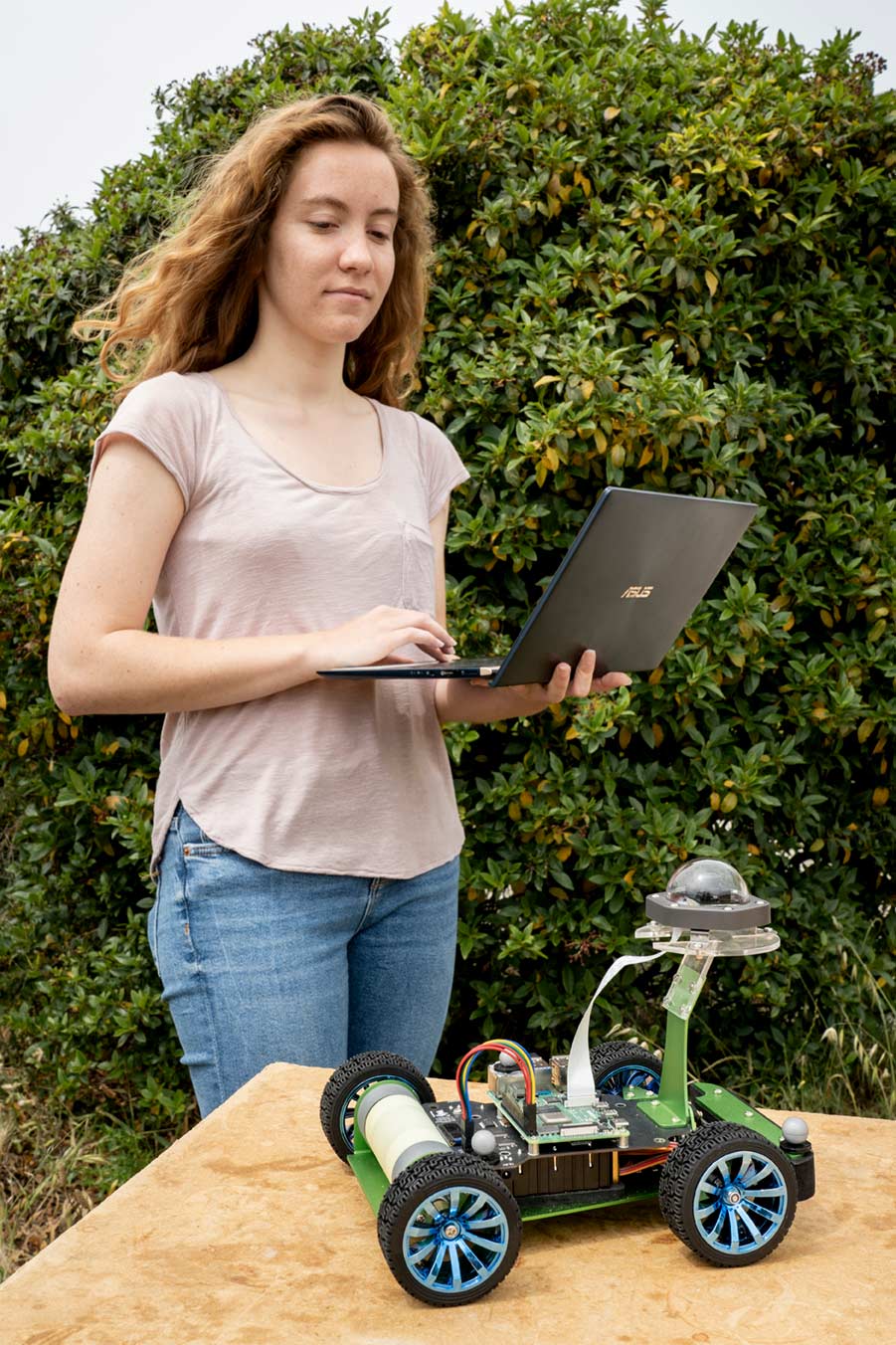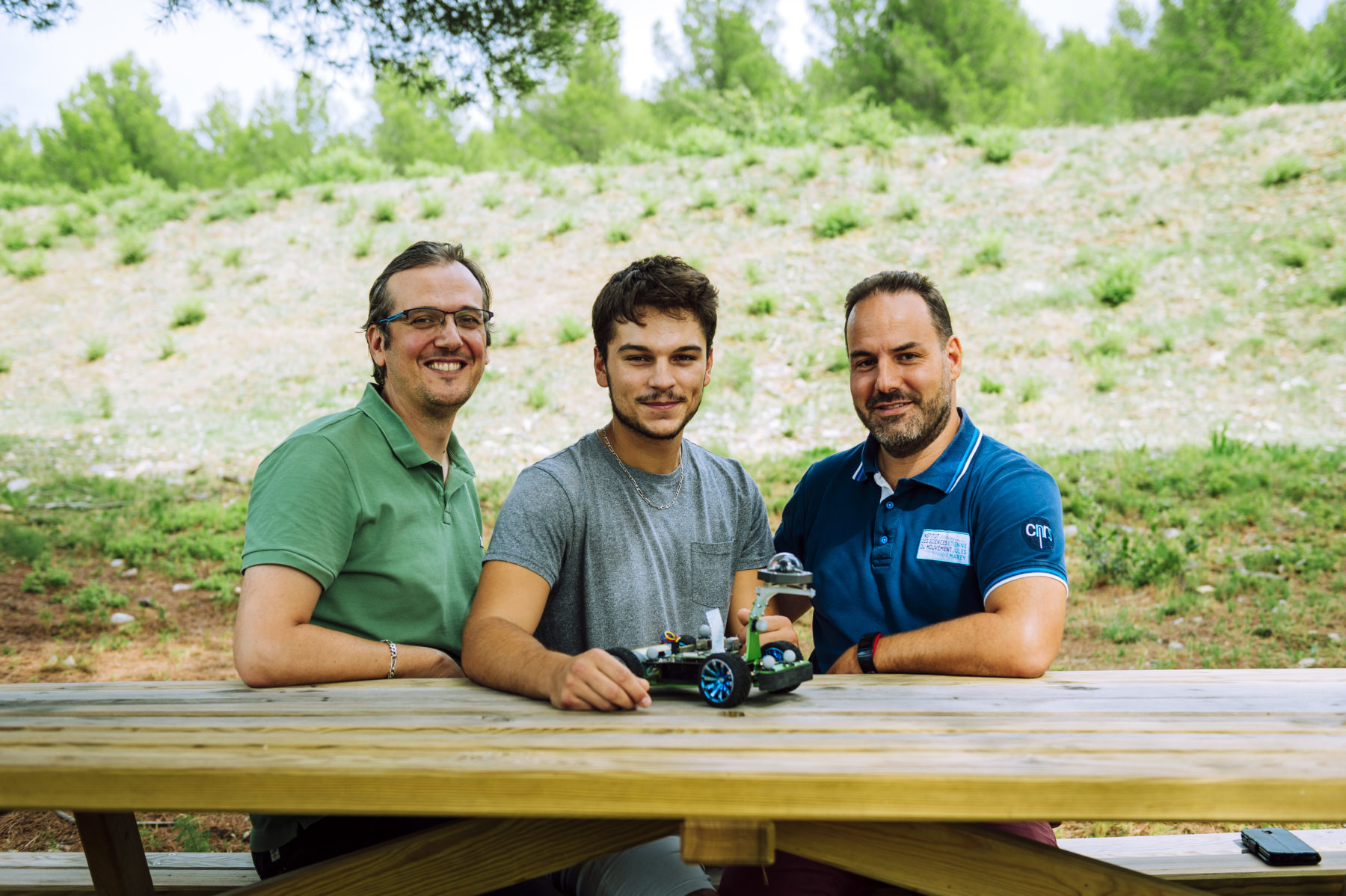The AntCar autonomous vehicle
A car-like vehicle with panoramic vision inspired by ants
The aim of the AntCar project is to develop a new route-following method for mobile robots or intelligent vehicles in environments lacking satellite geolocation, such as urban canyons or indoor spaces. To achieve this, we used a robust, biologically constrained neural model inspired by ants, previously developed in simulation, to evaluate the familiarity index of a panorama.
This algorithm, used in visual compass, consists in determining the orientation of the maximum familiarity index with respect to the panoramas learned along a path. A car-like robot was fitted with a 220° panoramic camera. The algorithm corrects course using very low-resolution 44×44 pixel images (5°/pixel) inside and outside to determine the direction to follow along the previously visually learned path.
The results obtained are particularly reliable and reproducible. The biologically constrained neural model stores visual information sparingly and efficiently, so that visual memory has a very small memory footprint of just a few tens of kilobytes per kilometer traveled.


Institut des Sciences du Mouvement – Etienne-Jules Marey (CNRS/AMU, ISM UMR7287).
© Cyril Fresillon / ISM / CNRS Images (2024)
Introducing the AntCar robot ant and the X-Fly flapping-wing robot
References:
- Gattaux, G. G., Wystrach, A., Serres, J. R., & Ruffier, F. (2025). Route-centric ant-inspired memories enable panoramic route-following in a car-like robot. Nature Communications, 16(1), 8328.
DOI : 10.1038/s41467-025-62327-3
HAL : hal-04820343
YT : https://www.youtube.com/watch?v=6YIkDhN4SaY - Gattaux, G. G., Serres, J. R., Ruffier, F., Wystrach, A. (2025). Visual Homing in Outdoor Robots Using Mushroom Body Circuits and Learning Walks. The 14th International Conference on Biomimetics and Biohybrid Systems, Living Machines 2025.
15-18 July 2025, Sheffield, United Kingdom
HAL: hal-05160353v1
YT: https://www.youtube.com/watch?v=2pZ1nTxyf2k - Gattaux, G., Wystrach, A., Ruffier, F., & Serres, J. R. (2025). Enhancing Ant-Inspired Visual Compass with Focused Visual Scan in a Compact Robot. In The 7th IEEE International Conference on Artificial Intelligence Circuits and Systems (pp.110-114), 28-30 April, Bordeaux, France.
HAL: hal-05055159v1 (proceeding)
YT: https://www.youtube.com/watch?v=iRewX9KLJDQ - Gattaux, G., Wystrach, A., Serres, J. R., & Ruffier, F. (2024). Continuous Visual Navigation with Ant-Inspired Memories.
Preprint HAL.
HAL: hal-04820343
Gattaux, G., Vimbert, R., Wystrach, A., Serres, J. R., & Ruffier, F. (2023). Antcar: simple route following task with ants-inspired vision and neural model. Preprint HAL.
HAL: hal-04060451
Patent:
- Serres, J. R., Gattaux, G., Ruffier, F, & Wystrach, A. Procédé de guidage vers une destination. (2025). Patent FR3151085 / WO2025012244A1, January 17.